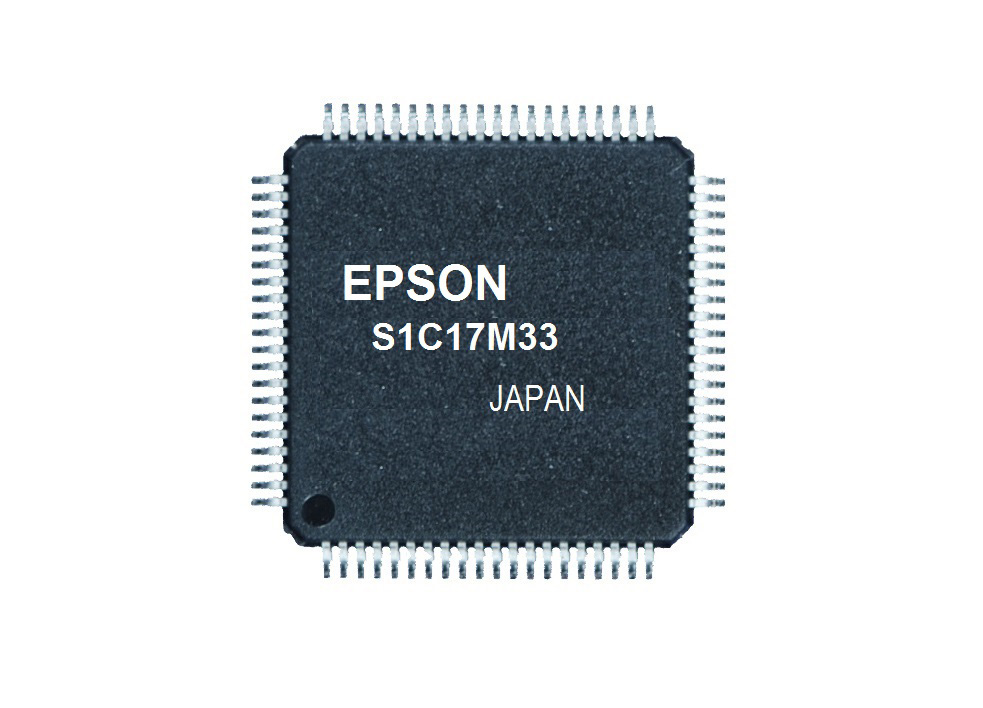Seiko Epson Corporation (TSE:6724,”Epson”) has developed and recently begun shipping the S1C17M33 in production volumes. The S1C17M33 is a low-power 16-bit microcontroller with on-chip Flash memory that is ideal for liquid crystal displays on remote control panels for home appliances such as air conditioners. Epson has also begun volume production of other microcontroller units (MCUs) in the series, including the S1C17M30, S1C17M31, S1C17M32, and S1C17M34. The company plans to produce 200,000 units of each model per month.
Epson has earned a strong reputation among customers for proposing applications in mobile equipment for its single-chip MCUs that integrate low-power and liquid crystal driving technologies. Epson has continued to expand and enhance its S1C17 family of 16-bit MCUs with Flash memory. Used in multifunction digital watches, hand-held card reader tokens*, home appliance remote controllers, and many other battery-driven applications, these MCUs enable advanced functions and larger, high-resolution LCD screens yet help to extend battery life thanks to Epson’s low-power technology.
A growing number of MCUs support only low operating voltages, but there is still a strong need in factory automation equipment and some home appliances for MCUs that support 5 V operation. Epson is responding to this need by expanding its lineup of products with selectable operating voltages ranging from 1.8 V to 5.5 V.
The new S1C17M33 features expanded universal port multiplexer (UPMUX) functions, which allow users to assign input/output (I/O) functions as needed with software. Users can also reconfigure LCD ports to general-purpose input/outputs (GPIO). The MCU can be used for basic applications such as the driving of LCDs with up to 368 dots, but users can also reconfigure the I/Os to give the MCU up to 65 GPIOs. The flexible configuration allows users to embed the MCU in products with different specifications, which helps users to increase their product development efficiency. The new MCU also offers far more flexibility in board layout. From business-use operation panels that run on 5 V to battery-operated home appliance remote control panels, the S1C17M33 supports a wide range of applications.
The MCU is a single-chip solution that integrates an infrared remote control output signal generator, three types of serial interface, 96 Kbytes of self-programmable Flash memory, and 4 Kbytes of RAM. In addition, a part of the Flash area or a dedicated area can be used as EEPROM by providing specified libraries.
Epson is offering the S1C17M33 in an 80-pin thin quad flat pack (TQFP14-80 package) or as a bare die that will save board space. The other MCUs in this series (the S1C17M30, S1C17M31, S1C17M32, and S1C17M34) have smaller display drivers and less Flash memory than the S1C17M33.
Epson is committed to helping its customers improve the performance of their products with solutions that leverage Epson’s efficient, compact, and precision technologies.
* Tokens are devices that issue a one-time only password. They are used in online banking, for example, to enhance security.
Notes:
1. See the attachment for the key product features and specifications.
2. Please see the link below for further details about these products.
http://global.epson.com/products_and_drivers/semicon/products/micro_controller/16bit/#ac14